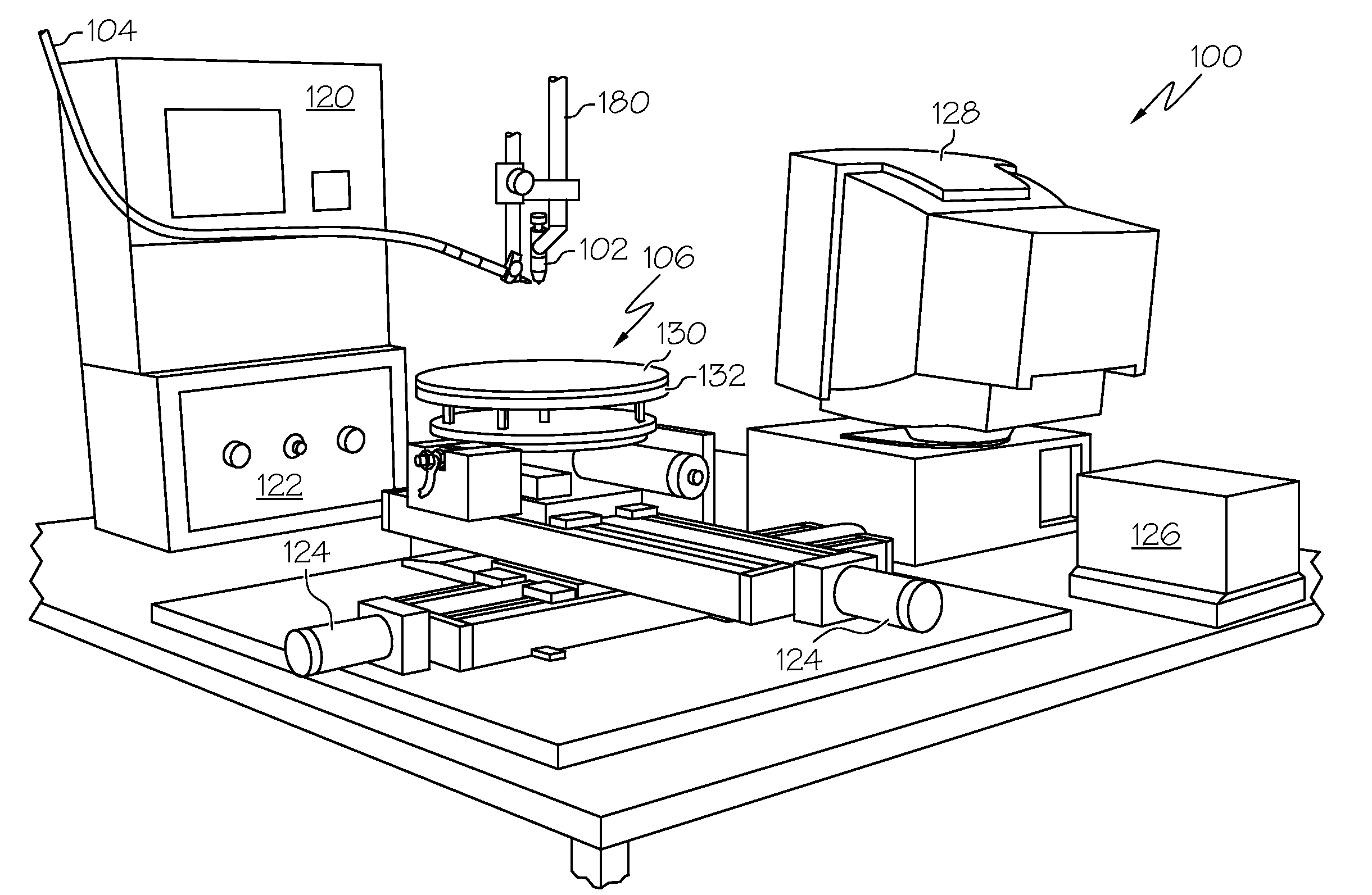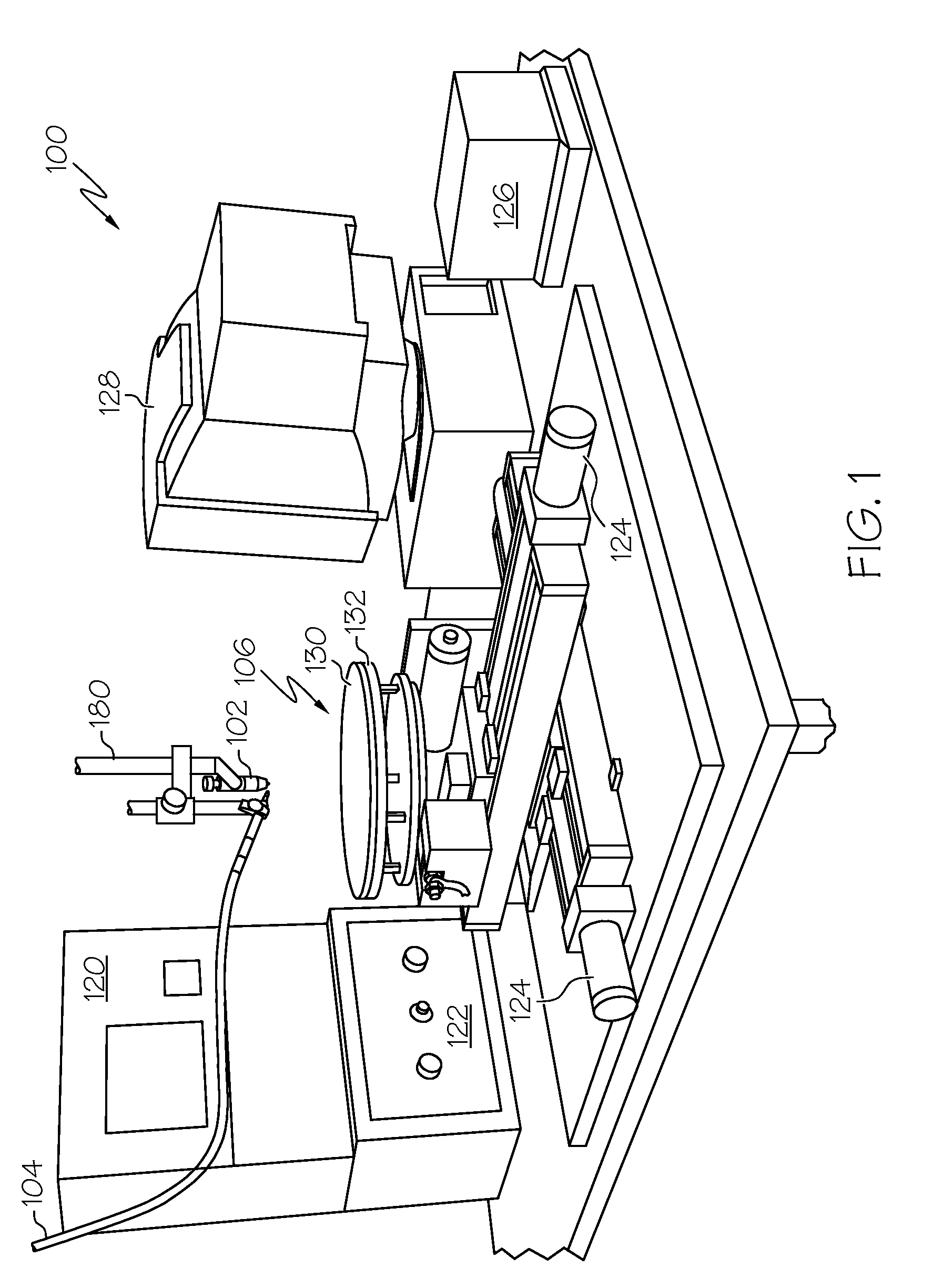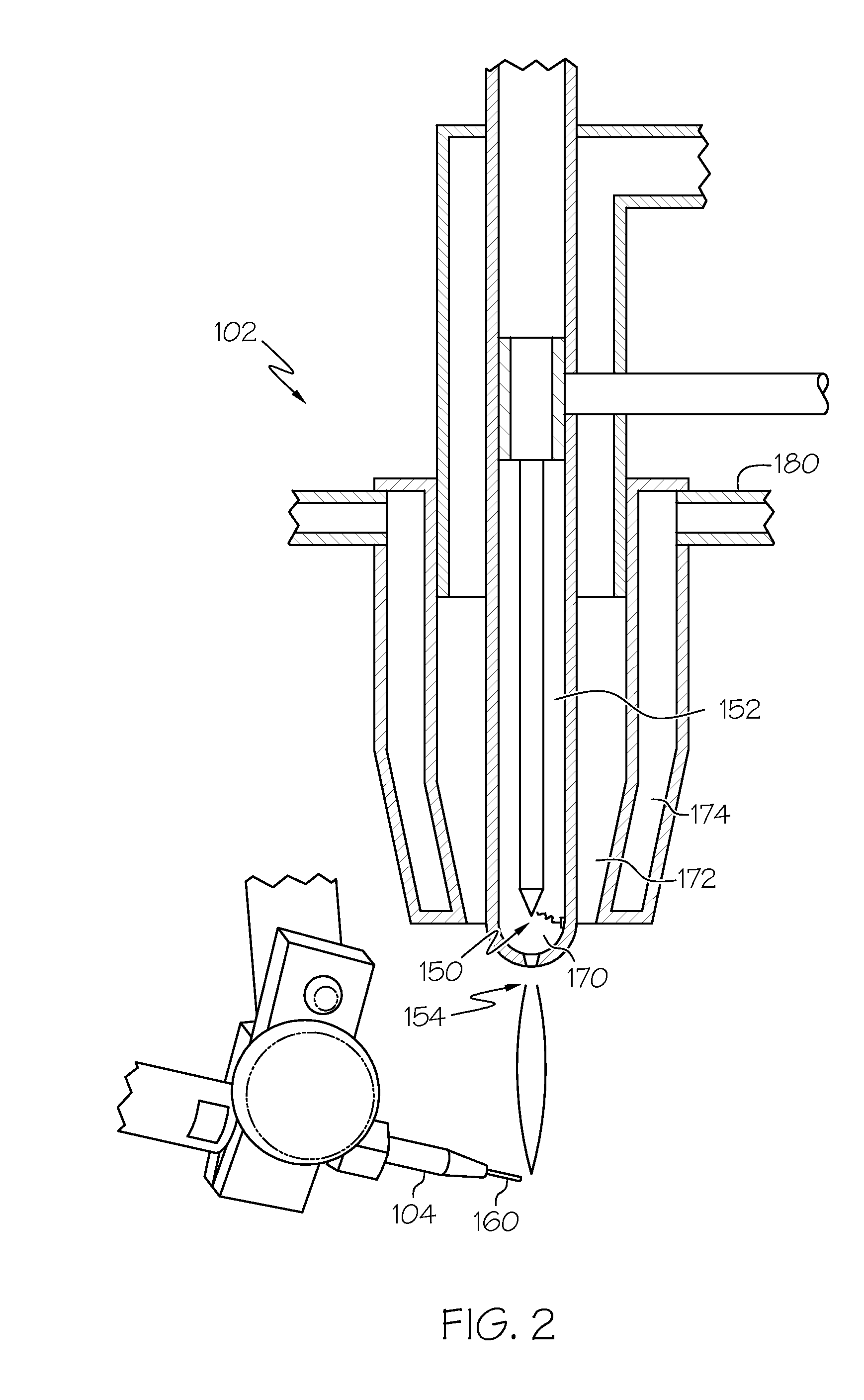Deposition of materials with low ductility using solid free-form fabrication
a technology of free-form fabrication and low ductility, which is applied in the direction of manufacturing tools, welding/cutting media/materials, and manufacturing tools. it can solve the problems of low ductility, brittleness, and material fracture, and achieves low ductility and low ductility. , the effect of minimizing the occurrence of material stresses
- Summary
- Abstract
- Description
- Claims
- Application Information
AI Technical Summary
Benefits of technology
Problems solved by technology
Method used
Image
Examples
Embodiment Construction
[0016]The following detailed description of the invention is merely exemplary in nature and is not intended to limit the invention or the application and uses of the invention. Furthermore, there is no intention to be bound by any theory presented in the preceding background of the invention or the following detailed description of the invention.
[0017]FIG. 1 is a perspective view of a SFF system, and more particularly an IFF system 100, which includes a heating torch 102 that functions in cooperation with a wire feed mechanism 104 and a positioning system 106 to build up a workpiece in a continuous or layer-by-layer manner. The positioning system 106 continuously positions and repositions the workpiece in a manner whereby feedstock material may be added to it through the wire feed mechanism 104 at predetermined deposition points. Further, the positioning system 106 may also be configured to coordinate movement and control of the torch 102 and the wire feed mechanism 104 together wit...
PUM
| Property | Measurement | Unit |
|---|---|---|
| elongations | aaaaa | aaaaa |
| temperature | aaaaa | aaaaa |
| ductility | aaaaa | aaaaa |
Abstract
Description
Claims
Application Information
 Login to View More
Login to View More - R&D
- Intellectual Property
- Life Sciences
- Materials
- Tech Scout
- Unparalleled Data Quality
- Higher Quality Content
- 60% Fewer Hallucinations
Browse by: Latest US Patents, China's latest patents, Technical Efficacy Thesaurus, Application Domain, Technology Topic, Popular Technical Reports.
© 2025 PatSnap. All rights reserved.Legal|Privacy policy|Modern Slavery Act Transparency Statement|Sitemap|About US| Contact US: help@patsnap.com



